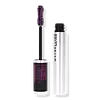What's inside
What's inside
 Key Ingredients
Key Ingredients

 Benefits
Benefits

 Concerns
Concerns

 Ingredients Side-by-side
Ingredients Side-by-side

Water
Skin ConditioningPotassium Cetyl Phosphate
EmulsifyingParaffin
PerfumingEthylene/Va Copolymer
Emulsion StabilisingCopernicia Cerifera Cera
EmollientStyrene/Acrylates/Ammonium Methacrylate Copolymer
Cera Alba
EmollientSynthetic Beeswax
Emulsion StabilisingBis-Diglyceryl Polyacyladipate-2
EmollientPolybutene
Cetyl Alcohol
EmollientSteareth-20
CleansingGlyceryl Dibehenate
EmollientSteareth-2
EmulsifyingPhenoxyethanol
PreservativeSilica
AbrasiveHydroxyethylcellulose
Emulsion StabilisingAcacia Senegal Gum
MaskingTribehenin
EmollientCaprylyl Glycol
EmollientGlyceryl Behenate
EmollientSodium Dehydroacetate
PreservativeHydrogenated Jojoba Oil
AbrasiveHydrogenated Palm Oil
EmollientPropylene Glycol
HumectantDisodium EDTA
Butylene Glycol
HumectantRayon
Sodium Laureth Sulfate
CleansingPentaerythrityl Tetra-Di-T-Butyl Hydroxyhydrocinnamate
AntioxidantPvp
Emulsion StabilisingMethylparaben
PreservativeTetrasodium EDTA
Potassium Sorbate
PreservativeBHT
AntioxidantCI 77007
Cosmetic ColorantCI 77266
Cosmetic ColorantCI 77491
Cosmetic ColorantCI 77492
Cosmetic ColorantCI 77499
Cosmetic ColorantCI 77891
Cosmetic ColorantMica
Cosmetic ColorantCI 75470
Cosmetic ColorantCI 77288
Cosmetic ColorantCI 77742
Cosmetic ColorantCI 77510
Cosmetic ColorantCeramide AP
Skin ConditioningWater, Potassium Cetyl Phosphate, Paraffin, Ethylene/Va Copolymer, Copernicia Cerifera Cera, Styrene/Acrylates/Ammonium Methacrylate Copolymer, Cera Alba, Synthetic Beeswax, Bis-Diglyceryl Polyacyladipate-2, Polybutene, Cetyl Alcohol, Steareth-20, Glyceryl Dibehenate, Steareth-2, Phenoxyethanol, Silica, Hydroxyethylcellulose, Acacia Senegal Gum, Tribehenin, Caprylyl Glycol, Glyceryl Behenate, Sodium Dehydroacetate, Hydrogenated Jojoba Oil, Hydrogenated Palm Oil, Propylene Glycol, Disodium EDTA, Butylene Glycol, Rayon, Sodium Laureth Sulfate, Pentaerythrityl Tetra-Di-T-Butyl Hydroxyhydrocinnamate, Pvp, Methylparaben, Tetrasodium EDTA, Potassium Sorbate, BHT, CI 77007, CI 77266, CI 77491, CI 77492, CI 77499, CI 77891, Mica, CI 75470, CI 77288, CI 77742, CI 77510, Ceramide AP
Water
Skin ConditioningCera Alba
EmollientSynthetic Beeswax
Emulsion StabilisingGlyceryl Stearate
EmollientGlycerin
HumectantCopernicia Cerifera Cera
EmollientDimer Dilinoleyl Dimer Dilinoleate
EmollientStearic Acid
CleansingPalmitic Acid
EmollientEthylhexyl Polyhydroxystearate
EmollientPolyglyceryl-6 Polyricinoleate
EmulsifyingJojoba Esters
EmollientAcacia Senegal Gum
MaskingPanthenol
Skin ConditioningBenzyl Alcohol
PerfumingCaprylyl Glycol
EmollientSodium Hydroxide
BufferingXanthan Gum
EmulsifyingCaprylhydroxamic Acid
Arginine
MaskingLauric Acid
CleansingMyristic Acid
CleansingArachidic Acid
CleansingOleic Acid
EmollientTocopherol
AntioxidantWater, Cera Alba, Synthetic Beeswax, Glyceryl Stearate, Glycerin, Copernicia Cerifera Cera, Dimer Dilinoleyl Dimer Dilinoleate, Stearic Acid, Palmitic Acid, Ethylhexyl Polyhydroxystearate, Polyglyceryl-6 Polyricinoleate, Jojoba Esters, Acacia Senegal Gum, Panthenol, Benzyl Alcohol, Caprylyl Glycol, Sodium Hydroxide, Xanthan Gum, Caprylhydroxamic Acid, Arginine, Lauric Acid, Myristic Acid, Arachidic Acid, Oleic Acid, Tocopherol
Ingredients Explained
These ingredients are found in both products.
Ingredients higher up in an ingredient list are typically present in a larger amount.
Acacia Senegal Gum has skin soothing, thickening, and formulation stabilizing properties. It comes from the Acacia tree that is native to sub-Saharan Africa.
Caprylyl Glycol is a humectant and emollient, meaning it attracts and preserves moisture.
It is a common ingredient in many products, especially those designed to hydrate skin. The primary benefits are retaining moisture, skin softening, and promoting a healthy skin barrier.
Though Caprylyl Glycol is an alcohol derived from fatty acids, it is not the kind that can dry out skin.
This ingredient is also used as a preservative to extend the life of products. It has slight antimicrobial properties.
Learn more about Caprylyl GlycolCera alba is beeswax, or the wax used by bees to make honeycombs. It is a texture-enhancer and emollient. A study from 2003 found beeswax to be a stronger emollient than ingredients such as petroleum jelly.
As an emollient, beeswax helps hydrate the skin by creating a barrier on top. This barrier traps moisture in.
Emulsifiers help prevent ingredients from separating. This helps create consistent texture.
The structure of beeswax is mainly long-chain alcohols and the esters of fatty acids.
There are three types of beeswax: yellow, white, and absolute. Yellow is pure beeswax taken from the honeycomb. White beeswax is created by filtering or bleaching yellow beeswax. Absolute beeswax is created by treating beeswax with alcohol. Beeswax used in cosmetics are purified.
Beeswax has been used throughout history and even in prehistoric times. Some common uses for beeswax still used today are making candles, as a waterproofing agent, and polish for leather.
Learn more about Cera AlbaThis ingredient comes from a palm tree native to Brazil. This ingredient is used to thicken texture and leaves behind a film when applied.
Synthetic beeswax is created to be identical in structure to beeswax. It possesses the same occlusive and emulsion properties.
A blend of fatty acid esters, fatty acids, and alcohols are used to create synthetic beeswax. Whether or not this ingredient is vegan depends on the source. Sometimes, lanolin is used for its creation.
This ingredient may not be Malassezia folliculitis, or fungal-acne safe.
Learn more about Synthetic BeeswaxWater. It's the most common cosmetic ingredient of all. You'll usually see it at the top of ingredient lists, meaning that it makes up the largest part of the product.
So why is it so popular? Water most often acts as a solvent - this means that it helps dissolve other ingredients into the formulation.
You'll also recognize water as that liquid we all need to stay alive. If you see this, drink a glass of water. Stay hydrated!
Learn more about Water